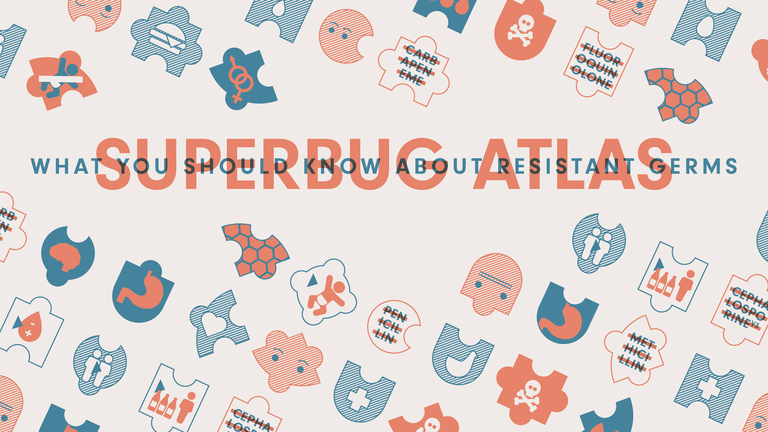Withdrawal symptoms
The American meat industry uses antibiotics as fattening agents indiscriminately: farmers can even mix the antibiotics into feed themselves. A new piece of legislation should help reign in the use of antibiotics – ten years after the EU first took action.

Since the 1950s, antibiotics have been used in the US as fattening agents. It is still not completely understood how antibiotics cause weight gain in farm animals, but one theory is that antibiotics change the intestinal flora of the animals, which alters the feed’s efficacy.
The use of antibiotics as fattening agents – it is extremely controversial and extremely problematic. Continuous use of antibiotics causes antibiotic resistance to build more quickly in animals and in humans. However, in the US, there is little regulatory control. Even today, farmers can mix antibiotics into feed without any oversight.
“Farmers never needed expertise or advice to use these antibiotics“, says epidemiologist Linda Tollefson. She dedicated her career to fighting the misuse of antibiotics. She previously worked for the US Food and Drug Administration (FDA), where she had the opportunity to work with representatives of the European Commission. She says “there is a whole lot the United States can learn“ from the European example.
Tollefson remembers how in 1996 the FDA set out to establish a monitoring system before the incredibly potent antibiotic fluoroquinolone was approved for use in broiler chickens. The organization feared that resistance would spread rapidly if the antibiotic was distributed to tens of thousands of chickens through their drinking water, even if only a handful of animals were sick.
“And guess what happened?“ asks Tollefson, before answering her own question. One hundred percent of the chickens showed resistant bacteria.
A new law should finally regulate the use of antibiotics in intensive animal agriculture. Called Guidance 213, the measure was adopted in 2013 and will be in full force by the beginning of 2017. The law prohibits the use of „medically important“ antibiotics as growth promoters and in some cases even medicinally.
In other words, antibiotics can be used but only with veterinary approval.
Experts like Carmen Cordova, a microbiologist at the non-profit Natural Resources Defense Council, worry that „Guidance 213“ is not enough to reduce the consumption of antibiotics as fattening agents. Her fear is that the use of antibiotics will simply be declared differently: Instead of labels reading „growth promotion“, labels will say „disease prevention.“
Cordova is also concerned that veterinarians are not required to collect data on the use of antibiotics. The FDA says they will soon implement a way to collect this data, but did not mention a specific date. This information is extremely important for establishing a clearer link between antibiotic use and the development of antibiotic resistance.
Dimtri Drekonja, an infectiologist at the University of Minnesota, says that lack of data is largely responsible for the continued high consumption of antibiotics. Doctors need evidence that antibiotic consumption leads to resistance, but there is often no reliable consumption data.
Although “Guidance 213” is a law full of loopholes, the pharmaceutical industry sees plenty to protest.
“Their representatives said there is no problem at all,” says Linda Tollefson – despite the fact that issue of antibiotic resistance is high on the global health agenda.
In the EU, according to 2009 estimates, approximately 1.5 billion euros were spent annually to combat infections caused by resistant bacteria. In the US, the figure is likely to be ten to 20 times as high — most likely because the US health care system’s costs are higher.
Worldwide the majority of antibiotics are used in animals. In the United States it is estimated that 15,000 tons of antibiotics per year are used in beef cattle, compared to under 4,000 tons in humans. According to a recent report, around half of the global consumption of antibiotics is unnecessary or improperly administered.
In the European Union the use of antibiotics for growth promotion in livestock has been prohibited since 2006. Antibiotic use is monitored and reported allowing EU countries to compare their consumption. With „Guidance 213“, the US is finally catching up.
Why so late? Because it is incredibly difficult to transfer the European model to US agriculture. „Europe does not have intensive animal agriculture like we do“, says Tollefson. In the US, factory farming is widespread and more dense. In 2014, the US produced about 11 billion kilos of beef, while the EU produced about 7 billion kilos.
While legislators are struggling to implement reforms in the face of powerful industry lobbying, change is coming in other ways: Fast food chains, like McDonald’s and Subway, are reacting to consumer concern by announcing they will minimize the amount of antibiotics used in their products.




